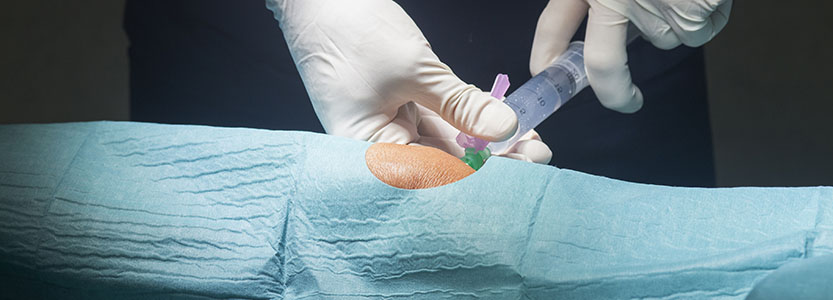
17 Nov Is outpatient knee surgery safe?
What is outpatient knee replacement surgery?
Thanks to advances in technology and pain management, it is now possible to receive outpatient knee replacement (also known as rapid-recovery knee replacement, ambulatory knee replacement, or same-day knee replacement).
If approved for this type of knee replacement surgery, the patient will undergo the operation and return home later the same day. Alternatively, for inpatient knee replacement surgeries, patients must stay overnight at the hospital.
Is outpatient knee surgery safe?
There are many factors to consider when deciding if an outpatient knee replacement surgery is safe for a given patient. Non-smoking, healthy patients with a strong support team of family and/or friends at home are the best candidates.
Age, weight, blood pressure, pre-existing conditions, and attitude may all need to be evaluated to assess if outpatient surgery is right for someone. Patients who undergo same-day knee replacement must be highly motivated to follow all post-surgery instructions.
The Mayo Clinic publishes an excellent guide on replacement knee surgery that is worth reviewing during your decision making process.
If these factors are accurately evaluated, outpatient knee replacement can be just as safe as inpatient surgeries for eligible patients.
Pre-Surgery
Some steps can be taken before surgery to increase the safety of outpatient knee replacement. The more prepared a patient feels, the lower the risks are for outpatient surgery. Getting physically fit and building muscle strength, lowering certain risks (weight, blood pressure, etc.) when possible, examining and minimizing stress and anxiety, and organizing home caretaking are all steps to take to before surgery.
Pre-surgical classes one or two weeks before surgery may be offered. These will often address how to prepare your home for your recovery, what to bring on the day of surgery, what equipment you may need for post-op movement and/or physical therapy, what to expect, and strengthening exercises.
Setting up your home for recovery before surgery takes place can be vital to a smooth, safe transition home post-op. Some considerations to keep in mind may be:
- Clearing walkways of obstructions
- Placing non-skid mats in showers and tubs
- Preparing meals ahead of time
- Setting up a comfortable recovery area
- Arranging transportation for follow up visits
- Having non-skid footwear
- Arranging transportation to follow-up appointments
Post-Surgery
After a rapid-recovery knee replacement surgery, patients will need to work closely with their surgeons, nurses, physical therapists, and home support teams to execute a home recovery plan.
A comprehensive recovery plan for at home use should include:
- Medication instructions
- Physical therapy plans (in-person, at home, and/or remote)
- Warning signs of complications, such as infection
- A timely system for contacting the surgeon or hospital should an issue arise
It is vital to outpatient knee replacement safety that patients have a way to quickly communicate any concerns with their doctor. Although risk of complication is low for those approved for this type of surgery, it is never zero, and medical professionals should be contacted at the first sign of any complication.
A timeline of replacement knee surgery is useful information to understand what your recovery will look like.
Benefits of outpatient knee surgery
Although there is some added work of monitoring your own recovery after outpatient knee replacement surgery, there are also added benefits. These include a lower risk of infection, a more comfortable recovery at your own home, and a quicker return to activity, and lower costs.
Remember that determining if outpatient knee replacement surgery is safe for you should always be a decision made by you and your medical professional. If you are eligible, preparation and a positive attitude will maximize the chances for a safe, quick recovery.

Sorry, the comment form is closed at this time.